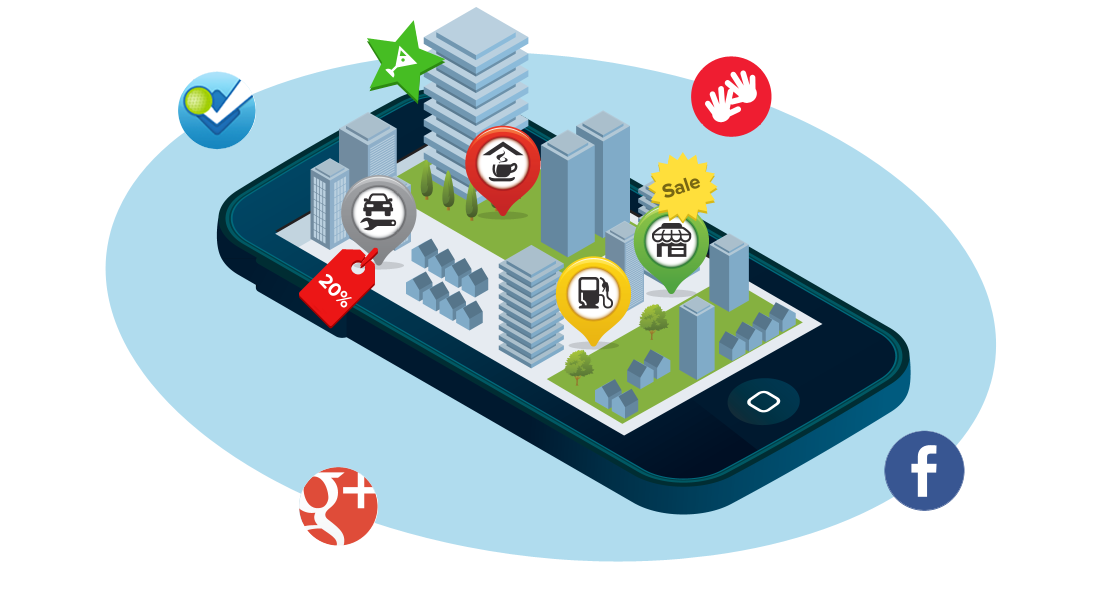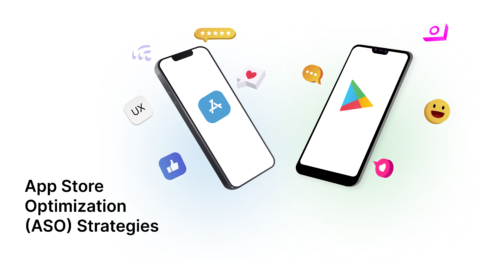Every single day some new ideas pop up from nowhere. With the increase of smartphones and digital maps, a lot of innovative industries are skyrocketing globally.
But what are location-based apps? An application that is used to provide services depends on the user’s location by enabling GPS on devices or over device networks. The user’s location information is gathered from GPS or cellular networks by getting the user’s latitude and longitudinal data.
Why Does Location-Based Apps Matter?
According to allied market research, In 2019, the location-based services market valued $23.74 billion. The value eventually projected to reach $157.34 billion at the end of 2026, which is 27.1% grown from 2019 to 2026.
Location-based apps play a crucial role. Let’s see in an example: When smartphones are introduced with GPS and location map services like google maps and apple maps. We are currently relying on these apps to find every route, destination, and even delivery service. When was the last time you asked for a route to the destination to a person stranger? It must be a while ago because you are using a smart map to go around the cities. The apps even give alternate routes depending on traffic congestions.
From location-based apps, we can get information about objects or the user’s physical location. From this information, we can get feedback from places they have visited, as you see on google maps doing with google guides.
How do location-based apps work?
Location-based technologies fetch the user’s location to provide services requested by the user. These are the technologies the tech used to build a location-based app.
- GPS
- Cellular Network
- IP Based Positioning System
- Geofencing
- WIFI Positioning
- Indoor Positioning System
GPS
GPS means a global positioning system, which is a satellite-based location fetching system built into our smartphones. It can fetch the exact location of the user and time of the place.
It is globally used in smartphones for fetching the user location and finding landmarks, routes, etc.,
Cellular Network
A cellular network is a positioning system that uses a triangulation method to determine the user’s geographical location. The mobile network providers have a lot of radio base stations and cell towers. When a mobile phone enters the range of cell towers, it can be tracked by a network provider. This commonly used by retail stores and restaurants to attract in-store customers.
IP Based Positioning System
Every device which is connected to the internet has its unique identifier called IP address. We can use that IP address to track the location of the user.
Geofencing
Geofencing uses GPS, wifi, or cellular network to trigger a pre-programmed action. It is set in the limit of virtual boundary when a mobile device enters or exits with a geofencing app or tag; we can track the user’s location.
WIFI Positioning
WIFI positioning is a geolocation system that relies on WIFI hotspots. It locates the devices when a device connects to its network.
Indoor Positioning System
GPS and satellite locations are not accurate when tracking inside of significant buildings like malls, airports, etc. This is where the indoor positioning system takes up a role. It is an extensive network of devices like smartphones, cameras, WIFI, and Bluetooth devices, which collects the location data.

How to create a location-based app?
If we are creating a location-based app initially, we need to analyze the market for the need to develop. After detailed market research, you can start ideating the features you want to include in the app. Here are the key steps to create a location-based app.
Prototyping
Prototype means a rough or working model of our app. It’s created with basic structure our app, which helps to gather information on how to improve in the app with necessary features.
Design
After getting ideas into a prototype, designing the application is an important step. When it comes to creating an app, it should be clean, innovative, and understandable for the best user experience. It would be best if you had a particular focus on creating the User Interface (UI) / User Experience(UX) for the application. The UI/UX design should be user-friendly with attractive visuals representing the features you are providing to your users.
Development
In this stage, you’ll need to hire a mobile development company to start with the main application. They will help you create a wireframe and prototype if you need any guidance in the product cycle’s discovery stage. You can choose the features you want and platforms like iOS and Android. To develop an app that can be used by your target users without any functional issues.
Tech Stack Used In-App
Choose a suitable technology stack for your app development as it influences the success of your location-based app. You’ll need two API for fetching users’ locations and another one for displaying that fetched user’s site to make your service efficient. You can determine the tech stack by the platform types such as IOS, Android, and Web.
For IOS, you can use Google Maps API, Core Location API, and Apple Mapkit for fetching user’s locations. In the case of Android, you can use location package, Google Maps API, Google Maps Directions API, Google Location Services, and Open Street Map.
Testing
Testing is an essential step that will impact the application. It is nothing but testing the scripts for the entire form to find errors and bugs. It helps to enhance the quality of the application and ensures that our app functions well.
App Release
After multiple testing, you can send you an app to be verified by the app stores to launch in the market officially. After the release, you need to maintain the application and release new updates to retain and attract new users to the app.
Conclusion
In a location-based app, that’s a lot of essential data like the user’s location and other data included. So data security must be a top priority to build credibility among the app users. If these data fell into the wrong hands, it will be a considerable risk.
Securing the data is the most crucial issue to tackle before launching the app.
Want to make to location-based app idea work? Hire Location-based mobile app developers from Agira Technologies. We can help you build a highly secured and robust location map.










